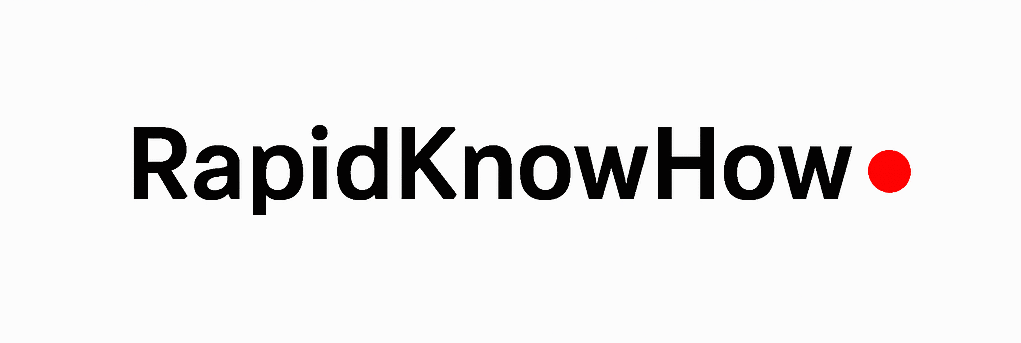Here’s a concise, critical assessment of the key ways a “new world order” could shape up by 2030—and which path is most likely.
Shaping the New World Order 2030: Scenarios, Assessment, and the Most Probable Path
By 2030, geopolitics will be defined less by a single hegemon than by how rival power centers manage interdependence in trade, technology, energy, and security. Three plausible end-states dominate: (1) fragmented multipolar blocs, (2) “guard-railed globalization” (competitive interdependence with tighter controls), and (3) a resurgence of single-pole leadership. The evidence points most strongly to scenario (2): a messier but still interconnected world with more tariffs, industrial policy, and “minilateral” rule-making—yet without a full rupture of global flows.
What’s changed since 2024—and why it matters
First, politics. The United States re-entered office under Donald Trump in January 2025 and pivoted sharply on trade, including a baseline tariff on imports and subsequent “reciprocal” and sector-specific measures. That shift, together with expanded Section 232 actions (e.g., on wood products), signals a durable U.S. preference for protective industrial policy and leverage via tariffs—not a return to liberal multilateralism. Reuters+4AP News+4Reuters+4
Second, global institutions. The WTO’s dispute system remains impaired; ministers extended the e-commerce tariff moratorium at MC13 but failed to restore a full appeals function. Members are still resorting to the ad-hoc MPIA or simply appealing into the void, underscoring a rules-lite era. Reuters+3wto.org+3dentons.com+3
Third, blocs and alignments. The BRICS+ grouping expanded its appeal. Indonesia joined in 2025, while Saudi Arabia’s status remained ambiguous through mid-2025 despite earlier reports—an illustration of fluid, transactional alignments rather than clean bloc lines.
Fourth, war and security. The Russia–Ukraine war continues into its fourth year with heavy drone and missile use and periodic escalations; neither side has forced a decisive shift on the front, reinforcing a long war of attrition that shapes European defense economics and global risk premia. Reuters+1
Finally, technology governance. AI moved onto a track of voluntary guardrails and national safety institutes via the UK-led Bletchley process and the 2024 Seoul Summit documents—real but nonbinding steps that fit a world of interoperability more than formal global treaties. GOV.UK+2AP News+2
The three scenarios
1) Fragmented multipolar blocs (“hard decoupling”)
In this pathway, techno-economic spheres of influence harden: export controls proliferate; financial and data channels localize; standards bifurcate; and cross-border investment sinks as firms prioritize political safety over efficiency. The case for this outcome rests on the U.S. tariff turn, export controls on semiconductors, and a paralysed WTO. Given ongoing chip controls and the step-up in U.S. tariff activism, this scenario remains non-trivial. But it collides with stubborn realities of supply chains and capital markets (more below). Reuters+2Reuters+2
2) Guard-railed globalization (“competitive interdependence”)
Here, countries keep trading and investing but wrap flows in protective rails: targeted tariffs, screening of FDI, export controls in narrow “chokepoint” tech, friend-shoring, and minilateral rulebooks (G7, TTC-style dialogues, climate clubs). AI and climate regimes evolve through iterative declarations and interoperability principles rather than a single global treaty. This scenario accepts rivalry yet exploits efficiencies where risk is tolerable. The policy facts now accumulating—U.S. tariffs calibrated (and recalibrated), limited global tech accords, and WTO workarounds—map closely onto this path. The White House+2GOV.UK+2
3) Resurgent single-pole order
This would require one power’s decisive economic, financial, and military outperformance and soft-power consent by others. China’s cyclical headwinds, the U.S.’s inward-leaning trade posture, and the EU’s strategic de-risking stance all argue against a consensual hegemon by 2030. BRICS+ remains diverse in interests; even its enlargement underscores multipolar bargaining rather than cohesive bloc discipline.
The data argue against “de-globalization,” but for re-wiring
Contrary to popular narratives, cross-border flows have not collapsed. The DHL Global Connectedness reports show globalization hit a record in 2022 and stayed near that level in 2023–2024, even as U.S.–China ties thinned and trade rerouted via third countries. That is competitive interdependence in practice. DHL+1
Capital is more ambivalent: UNCTAD finds FDI has fallen for two consecutive years (2024 down 11% net of conduits), with a shift toward selected Asian destinations and rising screening elsewhere. In short: trade is resilient; investment is choosier; risk management beats pure efficiency. UN Trade and Development (UNCTAD)+1
Energy reinforces interdependence, not fracture. The IEA projects record renewable additions through 2030 while LNG capacity surges mid-decade, implying both clean-energy scaling and a flexible gas safety valve. That mix undercuts simple bloc autarky and favors diversified, rules-light coordination. iea.blob.core.windows.net+2iea.org+2
Testing the scenarios against 5 stress lines
- Trade policy: A universal U.S. tariff baseline raises frictions but not walls; carve-outs, pauses, and deal-making are baked in. Expect churn and negotiation, not wholesale decoupling. Reuters+1
- Security shocks: Ukraine sustains European rearmament and NATO adaptation, but the war’s attritional character has not produced a systemic trade break beyond energy and defense sectors. understandingwar.org
- Technology standards: The Bletchley–Seoul track points to voluntary guardrails and networked safety institutes—cooperation sufficient for interoperability, insufficient for deep global regulation. GOV.UK
- Energy transition: Rapid renewables growth plus a wave of LNG supply provides redundancy and optionality across regions, supporting “hedged” interdependence. iea.org+1
- Institutions: With WTO appeals still frozen, countries stack minilateral fixes (MPIA, bilateral tariff deals) over universal adjudication—a hallmark of guard-railed globalization. wto.org+1
Why “guard-railed globalization” is the most probable by 2030
First, the path-dependence of flows. Even with tariffs and screening, global trade’s share of output remains near highs, and firms have already re-routed rather than re-shored entirely. Re-plumbing takes years and capital; most boardrooms prefer diversification over divorce. DHL
Second, political incentives. Governments want security in strategic nodes (chips, batteries, data) but need growth elsewhere. That produces selective decoupling, not general autarky; the U.S. mix of baseline tariffs plus sector deals exemplifies this calculus. Reuters
Third, energy economics. A combined surge in renewables and LNG capacity lowers the cost of hedging supply risk and dampens the impulse for bloc-exclusive energy deals. Markets reward flexibility; policymakers will follow. iea.org+1
Fourth, governance realism. AI safety statements, climate clubs, and trade “clubs” are easier to scale than full treaties. Expect layered, overlapping regimes that keep systems interoperable enough to avoid costly fragmentation. Access Partnership
Fifth, the war’s drag without rupture. Barring a dramatic settlement or escalation, the Ukraine conflict continues to reshape budgets and tech use (drones, EW) but not to sever global commerce outright. That supports risk-managed interdependence as the equilibrium. CSIS
Strategic implications for states, firms, and citizens
- States will compete on industrial policy quality: targeting chokepoints without over-subsidizing, maintaining alliances while keeping supply optionality.
- Firms must invest in resilience math: multi-sourcing, political risk pricing, and compliance automation to live with rolling tariff and standards shifts.
- Citizens will feel it via cost dispersion: cheaper in some sectors (commodity energy swings, scale in clean tech), pricier in others (strategic goods behind tariff walls).
The bottom line
A fractured world is an easy story; a hegemonic restoration is an old one. The harder, truer story to 2030 is a hybrid: guard-railed globalization—competitive interdependence with thicker buffers. Expect more tariffs and screenings, more minilateral deals, and more sector-specific rules, but continued high levels of trade and data flows. The winners will be those who master redundancy, standards interoperability, and credible guardrails without choking the dynamism that interdependence still delivers. DHL
Hier ist die deutsche Fassung – klar strukturiert, kritisch verdichtet.
Die neue Weltordnung 2030: Szenarien, Bewertung und der wahrscheinlichste Pfad
Bis 2030 wird die Weltpolitik weniger von einer einzigen Supermacht als von der Art geprägt sein, wie konkurrierende Machtzentren ihre wechselseitige Abhängigkeit in Handel, Technologie, Energie und Sicherheit managen. Drei plausible Endzustände ragen heraus: (1) fragmentierte multipolare Blöcke, (2) Globalisierung mit Leitplanken (kompetitive Interdependenz mit engeren Kontrollen) und (3) eine erneute Einpoligkeit. Die Indizien sprechen am stärksten für Szenario (2): eine unübersichtlichere, aber weiterhin vernetzte Welt—mit mehr Zöllen, Industriestrategien und „Minilateralismus“, jedoch ohne vollständigen Bruch der globalen Ströme.
Was sich seit 2024 verschoben hat – und warum es zählt
Politik: Die USA haben ihren handelspolitischen Kurs deutlich protektionistischer ausgerichtet (Basistarife, selektive sektorale Maßnahmen). Das signalisiert eine dauerhafte Präferenz für industriepolitische Eigenständigkeit und Druckmittel statt Rückkehr zu rein liberalem Multilateralismus.
Institutionen: Die WTO-Streitbeilegung bleibt geschwächt; Übergangslösungen ersetzen keine funktionierende Berufungsinstanz. Staaten weichen häufiger auf bilaterale Abmachungen und Ad-hoc-Mechanismen aus—Anzeichen für eine regelärmere, verhandlungsgetriebene Ordnung.
Blöcke & Ausrichtungen: BRICS+ gewinnt an Sichtbarkeit, doch die Interessen der Mitglieder divergieren. Das Muster ist weniger ein kohärenter Block als flexible, transaktionale Ausrichtungen—ein multipolares Feilschen.
Krieg & Sicherheit: Der Krieg in der Ukraine hat sich als langwieriger Abnutzungskonflikt erwiesen. Er treibt europäische Aufrüstung und verschiebt Budgets, ohne den Welthandel außerhalb von Energie und Rüstung substanziell zu zerschneiden.
Technologie-Governance: In der KI-Politik dominieren freiwillige Leitplanken, Koalitionen williger Staaten und nationale Sicherheitsinstitute. Das stützt Interoperabilität—ohne den Anspruch, globale, hart bindende Verträge zu schließen.
Drei Szenarien
1) Fragmentierte multipolare Blöcke („harte Entkopplung“)
Technologische und ökonomische Einflusszonen verhärten: Exportkontrollen nehmen zu, Daten- und Finanzflüsse werden regionalisiert, Standards driften auseinander, grenzüberschreitende Investitionen versiegen. Dafür sprechen Tendenzen wie Chip-Kontrollen, FDI-Screening und Zölle. Dagegen sprechen die Zähigkeit globaler Lieferketten, Pfadabhängigkeiten in Kapital- und Wissensströmen sowie die hohen Kosten vollständiger Entflechtung. Ergebnis: Dieses Szenario bleibt möglich, ist aber teuer und langsam zu realisieren.
2) Globalisierung mit Leitplanken („kompetitive Interdependenz“)
Staaten und Unternehmen handeln weiter, aber mit Randsicherung: gezielte Zölle, Investitionsprüfungen, Exportkontrollen in strategischen „Chokepoints“, Friend-/Nearshoring, und Regelwerke kleiner, gleichgesinnter Gruppen (G7, transatlantische Tech-Dialoge, Klimaclubs). Standards zielen auf Anschlussfähigkeit statt Einheitlichkeit; Daten-, Energie- und Warenströme bleiben hoch, nur stärker kuratiert. Dieses Szenario passt zu den beobachtbaren Politiken: Rivalität ja—aber unter Nutzung verbleibender Effizienzgewinne.
3) Wiederaufstieg einer Einpoligkeit
Dafür wäre ein Machtzentrum nötig, das ökonomisch, finanziell und militärisch deutlich outperformt und breite Akzeptanz findet. Realistisch bremsen demografische, fiskalische und produktivitätsbezogene Gegenwinde eine solche Dominanz. Zudem setzen EU, USA, China und andere auf „Ent-Risikisierung“ statt bedingungsloser Öffnung. BRICS+ bleibt heterogen. Fazit: Ein hegemonialer „Comeback“-Pfad bis 2030 ist wenig wahrscheinlich.
Daten sprechen gegen De-Globalisierung – und für eine Neuverkabelung
Handel: Globale Waren- und Datenströme haben sich eher umgeleitet als aufgelöst. Trotz Zöllen und Kontrollen bleibt der Außenhandel als Anteil am Welt-BIP hoch. Unternehmen ersetzen „effizienzmaximiertes Single-Sourcing“ durch diversifizierte, regional gestaffelte Liefernetze.
Kapital: Auslandsinvestitionen sind selektiver geworden. Screening-Regime und geopolitische Risiken dämpfen die Menge, verlagern aber die Richtung (etwa stärker nach Asien oder in „Freundes“-Jurisdiktionen). Kapital bleibt mobil—nur vorsichtiger.
Energie: Bis 2030 treffen zwei Trends zusammen: Rekordzubauten bei Erneuerbaren und ein Schub neuer LNG-Kapazitäten ab Mitte der 2020er. Diese Redundanz verringert den Zwang zu blockexklusiven Deals und begünstigt flexible Portfolios. Das stützt die Leitplanken-Logik.
Fünf Bruchlinien als Stresstest
- Handelspolitik: Basistarife und Sektorabgaben erzeugen Reibung, aber keine undurchdringlichen Mauern. Verhandlungen, Ausnahmen und Deals sind integraler Bestandteil—ein Muster, das eher „Kalibrierung“ als „Abriss“ bedeutet.
- Sicherheitsschocks: Der Ukraine-Krieg verändert Europa tiefgreifend, doch die globale Handelssphäre bleibt—abseits energie- und rüstungsnaher Bereiche—funktional. Ein Systembruch wäre erst bei massiver Eskalation zu erwarten.
- Technologiestandards: Interoperabilität schlägt Einheitlichkeit. Freiwillige KI-Leitplanken, Cloud-/Datenabkommen und offene, aber sicherheitsbewusste Ökosysteme setzen auf Anschlüsse statt Monopole. Das erleichtert grenzüberschreitende Skalierung trotz Rivalität.
- Energiewende: Erneuerbare + LNG = Puffer. Länder können Risiken hedgen, ohne sich in „Autarkie-Inseln“ zu verriegeln. Versorgungssicherheit entsteht durch Portfolio-Design, nicht durch Blockbildung.
- Institutionen: Mit schwächerer WTO-Schiedsarchitektur wachsen „minilaterale“ Formate und bilaterale Kompromisse. Ordnung entsteht schichtweise—nicht universal, aber ausreichend, um transnationale Aktivität zu tragen.
Warum „Globalisierung mit Leitplanken“ am wahrscheinlichsten ist
(1) Pfadabhängigkeit realer Ströme. Lieferketten, Plattformen, Normen und menschliches Kapital sind über Jahrzehnte verflochten. Komplettes „Entkabeln“ ist teuer und zeitraubend. Diversifikation statt Scheidung wird zum Rational.
(2) Politische Anreize. Regierungen wollen Sicherheit an strategischen Knoten (Halbleiter, Batterien, Daten), benötigen aber Wachstum in der Breite. Selektive Entkopplung („De-Risking“) wahrt Handlungsspielräume, ohne Produktivität zu opfern.
(3) Energieökonomie. Mehr erneuerbare Kapazität plus flexible Gasoptionen senken die Kosten des Hedgings. Je günstiger Redundanz, desto schwächer der Anreiz, sich exklusiv an einen Block zu ketten.
(4) Governance-Realismus. Harte, globale Megaverträge sind politisch schwer. Schichtmodelle—Erklärungen, Clubs, Kompatibilitätsregeln—sind machbar, iterativ und ausreichend, um Märkte funktionsfähig zu halten.
(5) Krieg als Dauerstress, nicht als Systembruch. Ohne dramatische Eskalation oder Durchbruch bleibt der Konflikt ein globaler Kostentreiber, kein Welthandelskiller. Das begünstigt Risiko-Management statt Systemverfall.
Strategische Implikationen für Staaten, Unternehmen, Bürger
- Staaten konkurrieren über die Qualität ihrer Industriepolitik: präzise Förderung an Engpässen statt Subventionsregen, Bündnisse pflegen und zugleich Angebotsoptionen offenhalten. Regulatorische Klarheit wird zum Standortvorteil.
- Unternehmen brauchen Resilienz-Mathematik: Mehrquellen-Strategien, politische Risiko-Bepreisung, Compliance-Automation. Lieferketten werden zu Portfolios mit aktiver Umschichtung, nicht zu statischen Netzen.
- Bürger spüren Preisdifferenzen: billiger dort, wo Skaleneffekte und Wettbewerb wirken; teurer bei strategischen Gütern hinter Zoll- und Kontrollschranken. Qualifikation in Geo-Ökonomie (Datenkompetenz, KI, Energie) wird zum individuellen Sicherheitsgurt.
Fazit
Eine zersplitterte Welt ist die einfache Erzählung; eine hegemoniale Rückkehr die nostalgische. Die realistischere Geschichte bis 2030 ist ein Hybrid: Globalisierung mit Leitplanken—kompetitive Interdependenz mit dickeren Puffern. Rechnen Sie mit mehr Zöllen und Screenings, mit mehr minilateralen Deals und sektorspezifischen Regeln—und mit weiterhin hohen Handels- und Datenflüssen. Gewinner sind jene Staaten und Unternehmen, die Redundanz, Interoperabilität und glaubwürdige Leitplanken meistern, ohne die Dynamik offener Märkte zu ersticken.
Here’s a crisp, action-first playbook to shape your life and wealth for a world of guard-railed globalization—using a practical Lead Wealth System you can run this week.
Shaping Your Life in Guard-Railed Globalization
The Lead Wealth System (6 Pillars + Guard-Rails + 90-Day Sprint)
What “guard-railed globalization” means for you
Trade and capital still flow—but with more friction, tariffs, screenings, data rules, and sudden policy shifts. Winners are diversified, liquid, compliant, multi-sourced, and option-rich. That’s exactly what the Lead Wealth System builds.
1) The Lead Wealth System — 6 Pillars
- Income Engines
- Build 2–3 independent income streams (job + advisory/creator + yield).
- KPI: No single client >30% of income; no single employer risk.
- Liquidity & Safety
- 12–18 months living costs in tiered liquidity (instant cash → 30–90-day paper).
- KPI: Months of Runway; “T-3” test (can you reach 3 months of cash in 3 banking days?).
- Growth & Ownership
- Broad, low-cost index core + selective ownership (private deals you truly know).
- KPI: Core index share ≥60% of growth bucket; position concentration <20%.
- Risk, Compliance & Protection
- Clean tax calendar, reporting, insurance stack, estate basics, cybersecurity hygiene.
- KPI: Zero late filings; password manager + 2FA everywhere; annual coverage review.
- Reputation & Network Capital
- Publish 1 useful signal/week, nurture 25 key relationships, mentor 1 person.
- KPI: Monthly “opportunity flow” (intros, deal leads, speaking asks).
- Purpose & Contribution
- 5% time or revenue to causes that expand your circle of trust and learning.
- KPI: Documented annual “impact return” (skills, reach, gratitude letters).
2) Guard-Rails: 10 Practical Moves (install these now)
- Runway: Hold 12–18 months expenses in layers (instant → 30–90-day bills).
- Client/Employer Risk: Cap top client/employer at ≤30% of income.
- Geographic Mix: Avoid >60% tied to one policy regime (income or assets).
- Currency Logic: Earn/hold partly where you spend; hedge large FX mismatches.
- Debt Discipline: Fix rates where possible; keep DSR <30% of net income.
- Compliance Stack: Annual file audit, proof-of-funds trails, estate basics (will, POA).
- Cyber Hygiene: Password manager, 2FA on finance & email, quarterly backups.
- Insurance Ladder: Health, term life (if dependents), disability/income protection, liability.
- Supply of Skills: AI-augmented skill routine (2h/week). Keep a portfolio of “shippable” outputs.
- Opportunity System: Quarterly “tour” of your network; log asks/offers; ship one public piece/week.
3) Resilient Allocation (simple & robust)
- Safety (35–50%): cash tiers, T-bills/short paper, high-grade deposits.
- Yield (20–35%): quality bonds, dividend ETFs, income real-assets/funds.
- Growth (20–35%): global equity index core + a measured “edges” sleeve (≤10%).
- Optional (0–5%): high-uncertainty bets you can emotionally write to zero.
Rebalance semi-annually or at ±20% drift. Keep total fees <0.40% blended.
4) 90-Day Sprint (from zero to anti-fragile)
Days 1–7: X-Ray & Runway
- Map cashflows, debts, assets (one page).
- Set a run-rate expense number; build the first 3 months cash immediately.
Days 8–21: Risk & Compliance
- Calendar all tax/reporting dates; password manager + 2FA; basic estate docs.
- Insurance check: health/term/disability/liability—fix gaps.
Days 22–45: Income Engine #2
- Package a 4-week “micro-offer” (advisory, cohort, creator product). Ship MVP.
Days 46–70: Allocation Reset
- Move to the resilient buckets; automate contributions; kill sub-scale positions.
Days 71–90: Network & Signal
- List top-25 relationships; do a value touch. Publish 4 useful signals in 4 weeks.
Rituals: Weekly review (30 min), Monthly close (60 min), Quarterly rebalance (2 h).
5) WordPress-ready Actionboard
Minimal, fast, and local—no external libraries. Use it to score your guard-rails in minutes.
Lead Wealth Actionboard
Guard-Rails scorecard for a world of competitive interdependence.
1) Liquidity & Safety
2) Income Engines
3) Diversification
4) Compliance & Protection
6) Weekly Operating Rhythm (keep it boring = keep it winning)
- Mon 30′: Money stand-up (cash, inflows, big bills, top 3 actions).
- Wed 30′: Product/Offer (ship progress on your second income engine).
- Fri 30′: Network & Signal (2 high-value touches + 1 public post).
- Sun 30′: Review + Plan (update Actionboard; schedule next week).
7) Quick Cheat-Sheet (printable)
- 12–18 months runway in layers; ≤30% income concentration.
- Core index growth, low fees; largest position ≤20%.
- Compliance clean (tax, 2FA, insurance, estate).
- One public signal/week, 25 key relationships, mentor 1.
- Quarterly reset of allocations and offers.
—Here’s a concise glossary of the key terms & short forms used in the Lead Wealth System for a world of guard-railed globalization.
Glossary — Lead Wealth System (LWS)
Yield assets – Holdings that pay you regularly (quality bonds, dividend funds, income real-assets).
Actionboard – The simple WordPress-ready dashboard to input numbers, get a score, and see next actions.
AI-augmented routine – A weekly habit of using AI tools to speed up research, creation, and decision-making.
Allocation (Safety / Yield / Growth / Optional) – Four buckets for money: capital-preserving cash & bills (Safety), income-producing assets (Yield), long-term appreciation (Growth), and small, high-uncertainty bets (Optional).
AML / KYC – Anti-Money Laundering / Know Your Customer checks; documentation trails proving the source and legitimacy of funds.
Blended fee – Your all-in annual cost across funds/brokers; target <0.40%.
Compliance stack – Your admin hygiene: tax calendar, reporting, insurance review, cybersecurity (password manager + 2FA), and estate basics (will/POA).
Concentration risk – Over-reliance on one payer or one position; cap top client/employer at ≤30% of income and any single asset at ≤20% of investables.
Currency (FX) hedge – Matching some income/savings to the currencies you spend, or using simple hedges to reduce exchange-rate shocks.
Debt Service Ratio (DSR) – Monthly debt payments ÷ monthly net income; aim for <30%.
Details element – The clickable “accordion” sections used in the HTML blocks to reveal/hide content.
Diversification – Spreading risk across assets, sectors, and geographies so no single failure hurts you badly.
Dividend ETF – Exchange-traded fund holding dividend-paying stocks to deliver income.
Edges sleeve – The small, actively chosen part of your Growth bucket (max ~10%) for specific high-conviction ideas.
Estate docs (will / POA) – Legal basics that define who acts for you (Power of Attorney) and who inherits what (will).
Friend-shoring – Sourcing and investing more within trusted jurisdictions; relevant in guard-railed globalization.
Guard-railed globalization – Ongoing global flows with more frictions (tariffs, screenings, data rules), so resilience and compliance matter more.
Index core – The low-cost global index funds/ETFs that form the backbone of your Growth bucket.
Income engine – A distinct, monetizable activity (job, consulting, creator product, yield portfolio). Target 2–3 engines.
KPI – Key Performance Indicator; a measurable signal of progress (e.g., months of runway).
Largest single asset – Your biggest position as a % of investable assets; keep ≤20% to avoid blow-ups.
Liquidity tiers – Stacking cash by access speed: instant cash → 30–90-day bills/notes.
LWS (Lead Wealth System) – The 6-pillar framework (Income, Liquidity, Growth, Risk/Compliance, Reputation/Network, Purpose) + guard-rails + 90-day sprint.
Minilateral – Small-group agreements (e.g., G7-style) that set practical rules without full global treaties.
MVP – Minimum Viable Product; the smallest useful version of your new offer you can ship fast to learn from customers.
Opportunity flow – The monthly count of valuable inbounds (intros, leads, speaking asks) your reputation/network generates.
Optional sleeve – Tiny bucket (0–5%) for asymmetric, high-uncertainty bets you can emotionally write to zero.
Password manager – App that stores complex unique passwords; pair with 2FA for security.
POA – Power of Attorney; appoints someone to act for you if you can’t.
Rebalance – Periodically resetting allocations back to targets (e.g., semi-annually or at ±20% drift).
Reputation capital – The trust you earn by shipping useful work publicly and helping others; it compounds into opportunity flow.
Run-rate – Your typical monthly expenses; use it to size your runway.
Runway (months) – Liquid assets ÷ monthly expenses; aim 12–18 months.
Safety assets – Capital-preserving holdings like cash, T-bills, and short-term high-grade notes.
Shippable output – Tangible work others can use now (guide, template, analysis, code, micro-course).
Short paper – Short-dated government/quality notes (≈30–90 days) that earn yield with low price volatility.
Signal (public) – One helpful, public piece per week (post, note, chart) that demonstrates expertise.
T-bills – Short-term government securities (typically ≤1 year) used in the Safety bucket.
T-3 test – Ability to access 3 months of living costs within 3 banking days.
Total score (Actionboard) – Weighted index (Runway, Concentration, Diversification, Compliance) guiding your next moves.
2FA – Two-Factor Authentication; a second login step (app/SMS/security key) to secure accounts.





